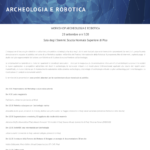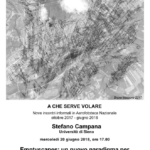For the better part of a century aerial photography has been one of the archaeologist’s most important instruments for the detection of archaeological features and the representation of the resulting evidence through cartography.
In particular, ‘historical’ photographs from the 1930s, 1940s and 1950s show a landscape profoundly different from that of today. Building development, infrastructure projects, land-use change and mechanised agriculture have radically changed the landscape, completely destroying or partially concealing significant parts of the archaeological resource.
Only through the detailed analysis of this historical air photo coverage will it be possible to recover, in part at least, the presence, siting and inter-relationship of settlements and other man-made features and natural phenomena. Further reasons for interest in this source lie in the breadth of coverage represented in vertical aerial photography (extending in most cases to at least the provincial or regional scale) and in the huge amount of photographic material available, often without charge, in provincial, regional and military archives and in private collections. More recent vertical images offer an up-to-date record of the landscape for comparison with the earlier coverage, thereby defining in detail the transformations that have taken place in any chosen study area in recent years.
In addition, ‘new’ vertical photography, if carefully timed to coincide with the best visibility of cropmarks or other traces of the past, can prove a highly effective research tool. In this context one might point to the research carried out in Italy at the University of Lecce, in Austria at the University of Vienna
and in Great Britain by a variety of bodies.
It has been demonstrated that vertical coverage which coincides with a window of high aerial visibility can document many hundreds of archaeological sites and features in a few tens of minutes. Any kind of cost-benefit comparison with other investigative techniques would see this as an extraordinarily favourable return.

